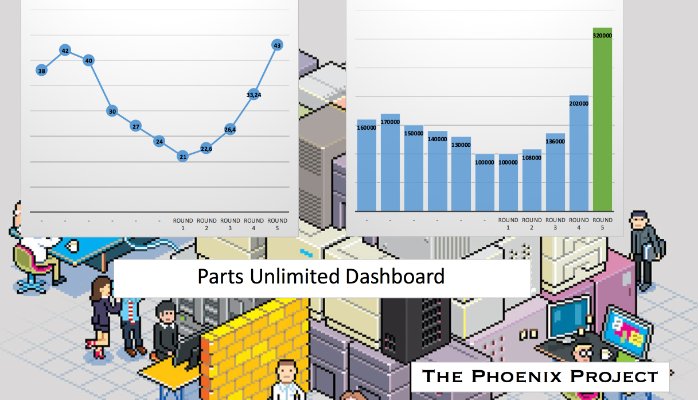Lessons from the DevOps Simulation & The Phoenix Project: Continuous Learning
Published October 24, 2017

<p><span style="font-size: 12pt;">At Solidify, we offer an interactive <a href="http://solidify.se/devops-software-development/">DevOps</a> simulation named after the famous book <a href="https://www.google.se/url?sa=t&rct=j&q=&esrc=s&source=web&cd=1&cad=rja&uact=8&ved=0ahUKEwicvYP-hInXAhUHYVAKHUDuB-YQFggnMAA&url=https%3A%2F%2Fwww.amazon.com%2FPhoenix-Project-DevOps-Helping-Business%2Fdp%2F0988262592&usg=AOvVaw0fo3UJhKEFJmomvW-CDLao"><em>The Phoenix Project </em>by author Gene Kim</a>. The simulation targets why DevOps is so important as well as what behavior and processes are needed in order to increase team efficiency. The simulation game is developed by <a href="http://www.gamingworks.nl/">GamingWorks</a> and their co-owner Jan Schilt. Below are some outlined lessons on continuous learning that the team hopefully discovers themselves during the simulation.</span></p>
<p><span style="font-size: 12pt;">Original post by Jan Schilt can be found <a href="https://www.linkedin.com/pulse/lessons-learned-from-devops-simulation-phoenix-project-jan-schilt/">here</a>.</span></p>
<h2><strong>A Definition of Continuous Learning</strong></h2>
<p><span style="font-size: 12pt;">I like this definition of Valerie I. Sessa in her book: From Continuous Learning, individual, group, and organizational perspectives:</span></p>
<blockquote><p><span style="font-size: 12pt;">Continuous learning at the team level is a deepening and broadening of the group’s capabilities in (re)structurering to meet changing conditions, adding new skills and knowledge and (re)creating into a more and more sophisticated system through reflection on actions and consequences.</span></p></blockquote>
<h2><strong>Lesson 1 – Plan Time for Learning</strong></h2>
<p> </p>
<p><img class="left alignnone" src="https://media.licdn.com/mpr/mpr/shrinknp_400_400/AAEAAQAAAAAAAAkEAAAAJDU2Nzk2NjA3LWRkYzctNDAyNC1iZWY0LTJlMTcwM2VlN2QyMg.png" alt="Do, reflect, think, decide" width="273" height="236" data-li-src="https://media.licdn.com/mpr/mpr/shrinknp_400_400/AAEAAQAAAAAAAAkEAAAAJDU2Nzk2NjA3LWRkYzctNDAyNC1iZWY0LTJlMTcwM2VlN2QyMg.png" /></p>
<p><span style="font-size: 12pt;">Learning is a process of doing, reflecting, thinking and deciding. Each of the steps are important. The doing is your day to day work, which takes mostly all of your 40 hours week. We hardly take time for reflection, thinking and making decisions what we are going to do different. Maybe we stop a bit to long in front of a traffic light because we are reflecting. Maybe you do not hear your children during diner while they are telling stories about school, because your a thinking about a new way of working. </span></p>
<p><span style="font-size: 12pt;">In the worst case you are not doing this at all and simply take a decision to ‘try’ something else. But, this is not the learning that will make a team grow. Learning should be an organized process with the team using the learning cycle of Kolb.</span></p>
<h2><strong>Lesson 2 – Learning in Teams</strong></h2>
<p class="left"><img class="left alignnone" src="https://media.licdn.com/mpr/mpr/shrinknp_400_400/AAEAAQAAAAAAAAkGAAAAJDlkNjc5NjE1LTUzYzQtNDI4Mi1hZDM4LWE3ODg3ZGI2ODQ4Zg.jpg" alt="Lessons learned from the phoenix project simulation" width="295" height="221" data-li-src="https://media.licdn.com/mpr/mpr/shrinknp_400_400/AAEAAQAAAAAAAAkGAAAAJDlkNjc5NjE1LTUzYzQtNDI4Mi1hZDM4LWE3ODg3ZGI2ODQ4Zg.jpg" /></p>
<p class="left"><span style="font-size: 12pt;">Since we are working in teams, we should learn in teams as well. It’s best to assign a ‘facilitator role’ to one of the team members. This role can manage time, observe the learning process and can give feedback to the team if they move to fast or if not all team members are involved.</span></p>
<p class="left"><span style="font-size: 12pt;"> Learning in teams also mean we need to learn to give feedback to each other in a constructive way with a focus on making the team a better team. It’s not about finding out ‘who was making the mistake’, it’s about avoiding them the next time. We also have to create a safe and open environment in which we are free to talk and explore.</span></p>
<h2><strong>Lesson 3 – We have to think before we decide!</strong></h2>
<p><span style="font-size: 12pt;">Finding solutions is very important in solving problems. For this we need to have a clear picture of the problem we want to solve (output of Reflection). Then the creative part starts; thinking. During this proces we are building a solution as a team. We draw, we discuss, we try to test solutions, we combine ideas and we build a solution. This process is crucial for the team result. This gives all team members the feeling that they are part of making their own work better. The outcome does not to be sold to the team, we don’t need to create buy-in. It’s the result of the team. We even create real ownership from the team, which make next improvements easier to organize since ‘it’s our solution’. </span></p>
<p><span style="font-size: 12pt;">After this ‘Thinking’ it’s not a big step for the team to ‘decide’ what we are going to do with the solution. The team will be eager to apply the new solution in the day to day work. It’s their solutions by the way, something to be proud of.</span></p>
<h2><strong>Lesson 4 – We need to ‘measure’</strong></h2>
<p><span style="font-size: 12pt;">It’s always good to measure if the decision of the team was the one that created impact. We have to check the results. Did we went faster? Did we work better? Are we all happy with the outcome? These questions should be the starting question of the next learning cycle (reflection). Don’t forget to evaluate the learning process it’s self by asking a question as: “How did the learning process work?</span></p>
<p><span style="font-size: 12pt;">And, celebrate the results as a team! Be proud of the results.</span></p>
<h2><strong>Lesson 5 – Share Knowledge</strong></h2>
<p><img class="left alignnone" src="https://media.licdn.com/mpr/mpr/shrinknp_400_400/AAEAAQAAAAAAAAdQAAAAJDQ5NDYyNTA1LTEwYTctNDI3MS1iOGQ1LWEzMTY0MTRjYWNjZQ.jpg" alt="Lessons learned from the phoenix project simulation" width="287" height="383" data-li-src="https://media.licdn.com/mpr/mpr/shrinknp_400_400/AAEAAQAAAAAAAAdQAAAAJDQ5NDYyNTA1LTEwYTctNDI3MS1iOGQ1LWEzMTY0MTRjYWNjZQ.jpg" /></p>
<p><span style="font-size: 12pt;">This is something which is easy to forget. We need to realize we are working as a team within an organization. Maybe other teams will have the same kind of questions or problems? Why do we let them reinvent the wheel? </span></p>
<p><span style="font-size: 12pt;">Think about ways of sharing. Use social media. Join learning (retrospective) sessions from other teams. </span></p>
<p> </p>
<p><span style="font-size: 12pt;"><em>Have your team started working with DevOps? Have you read The Phoenix Project and found inspiration? Let us know in the comments below!</em></span></p>